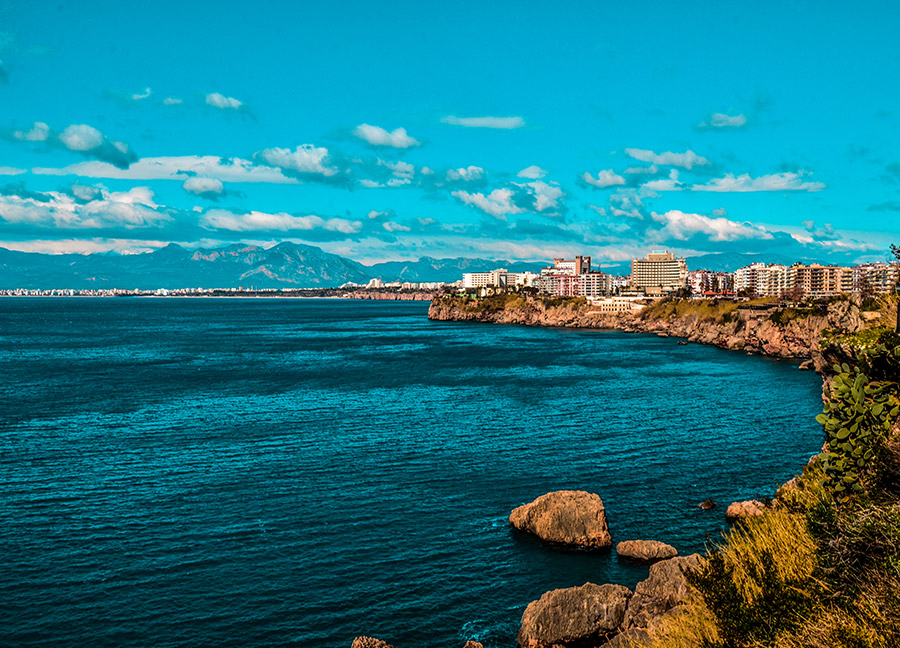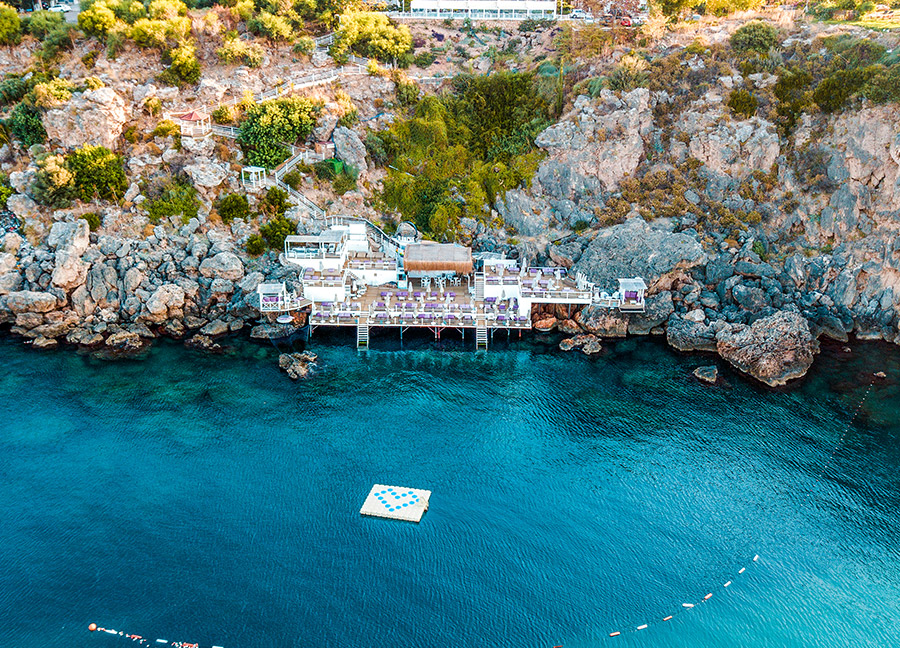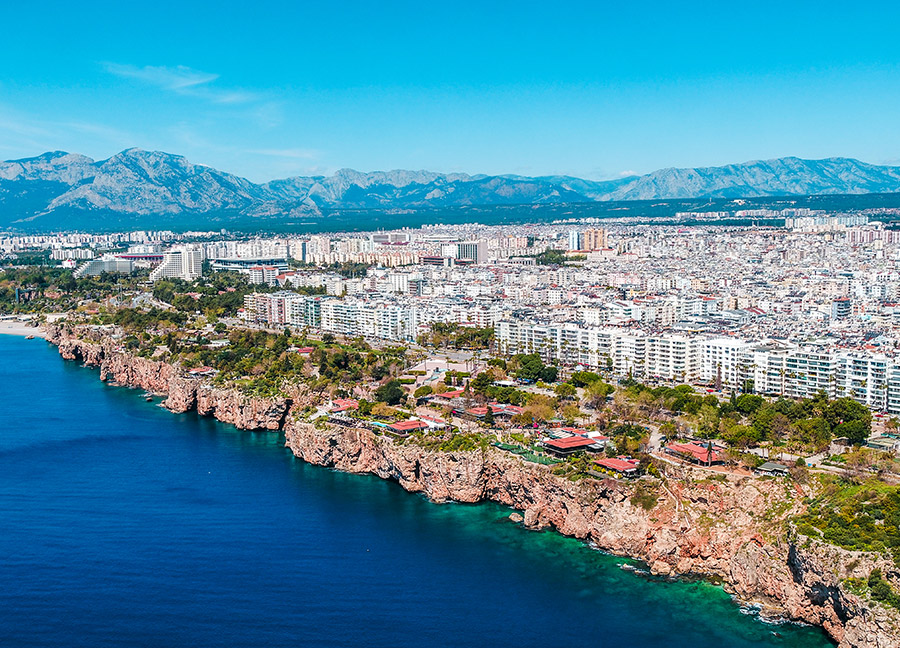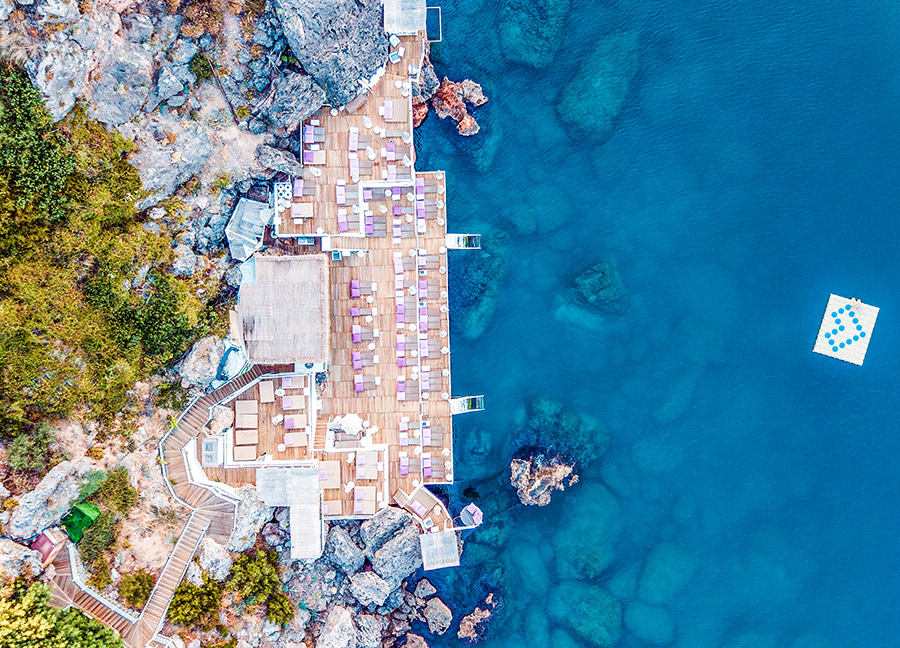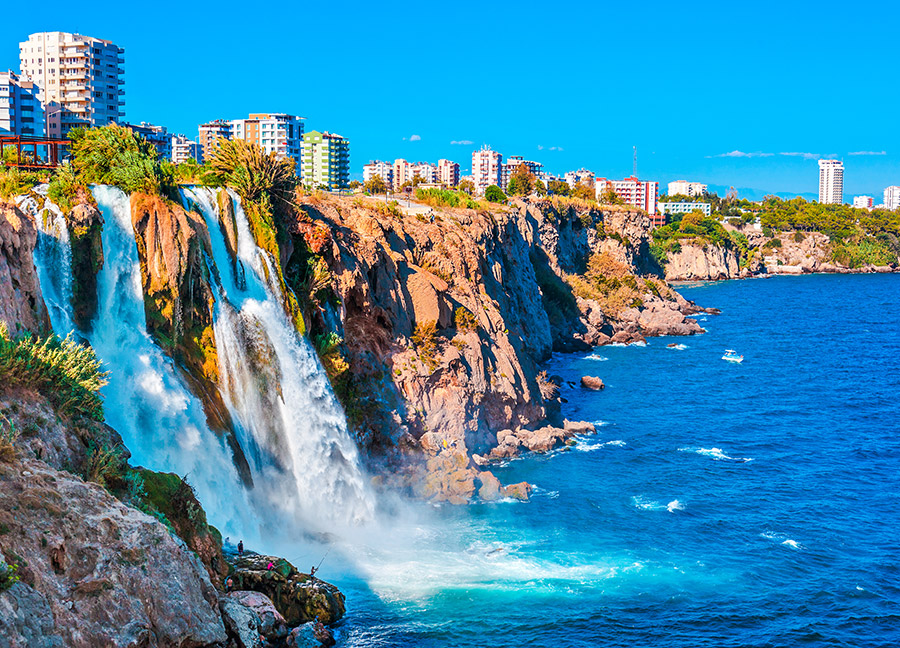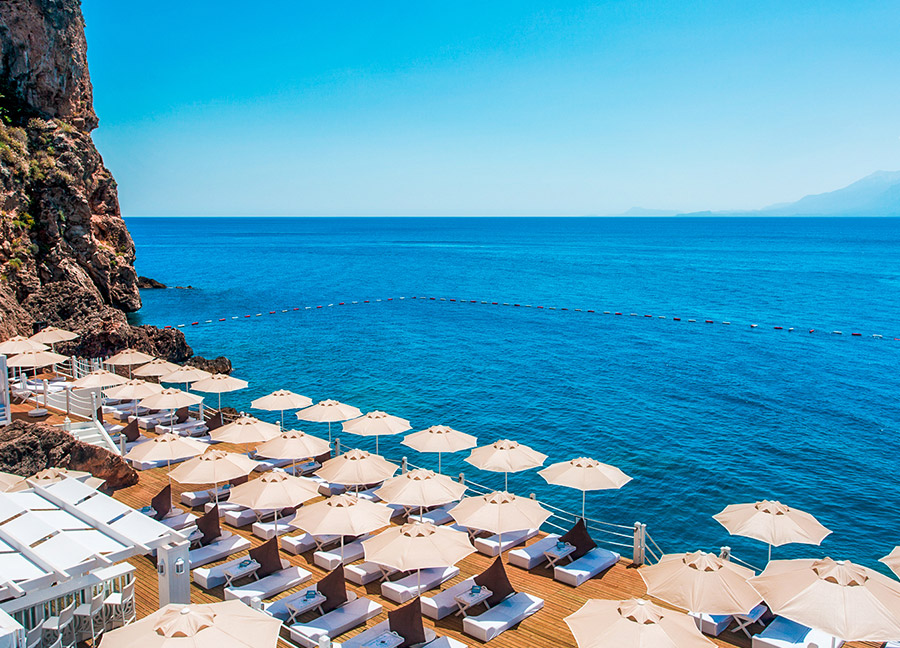Falez, which is from the French word falaise, means a steep rocky coast. In Turkish, the cliff, also called a 'yaliyar,' is defined as the ridges formed due to the waves hitting the shore and eroding them over time. As the layers or cavities in the coastal area where the wave hits grow, depending on the strength of the wave, the rocks above them fall, and the land moves inward. As a result, cliffs are formed. The Antalya Cliffs, whose apparent thickness exceeds 150 meters and whose formation dates back 64 million years, are considered one of the most important examples of cliffs in Turkey.
Between the two extensive beaches of the city center, Lara in the east and Konyaaltı in the west, approximately 13 km long Cliffs, as one of the most indispensable elements of the city's identity, add a separate charm and beauty to Antalya with its impressive views. The cliff formations, which have rich biodiversity and are the habitat of many creatures from birds to bats, go from 14 meters to 25 meters deep.
These enormous and exciting formations, which can be watched more closely from the sea with the tour boats departing from Kaleiçi Marina, offer a visual feast for the locals and those visiting Antalya.
The beaches, located in the heart of the cliffs, allow the residents and tourists to swim in the city's center. Gliding among the cliffs, in the clear blue waters reminiscent of an aquarium, against the magnificent Beydağları is a privileged way to experience the unique beauty of the Mediterranean.


